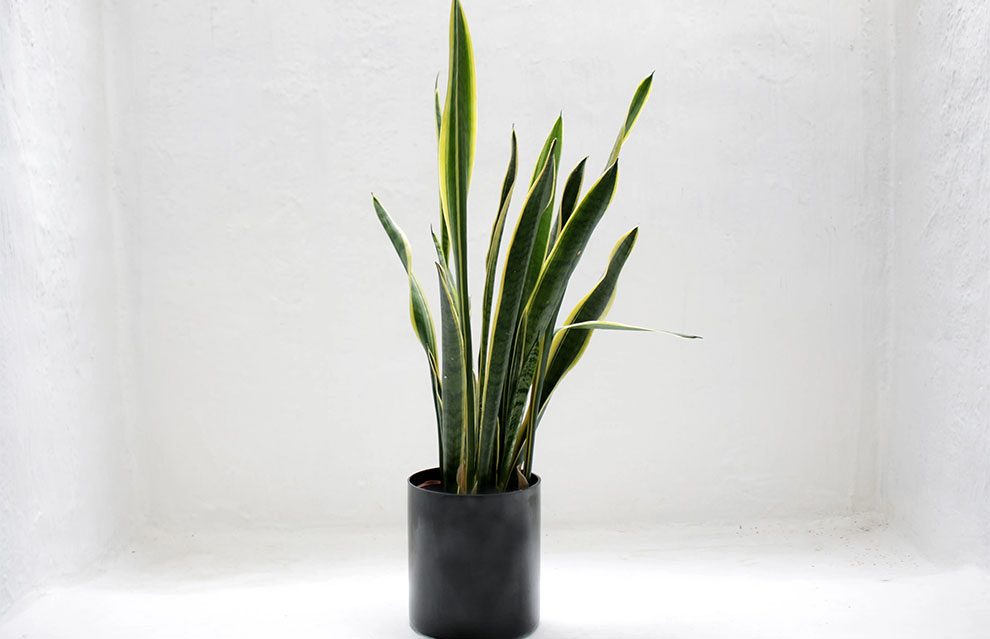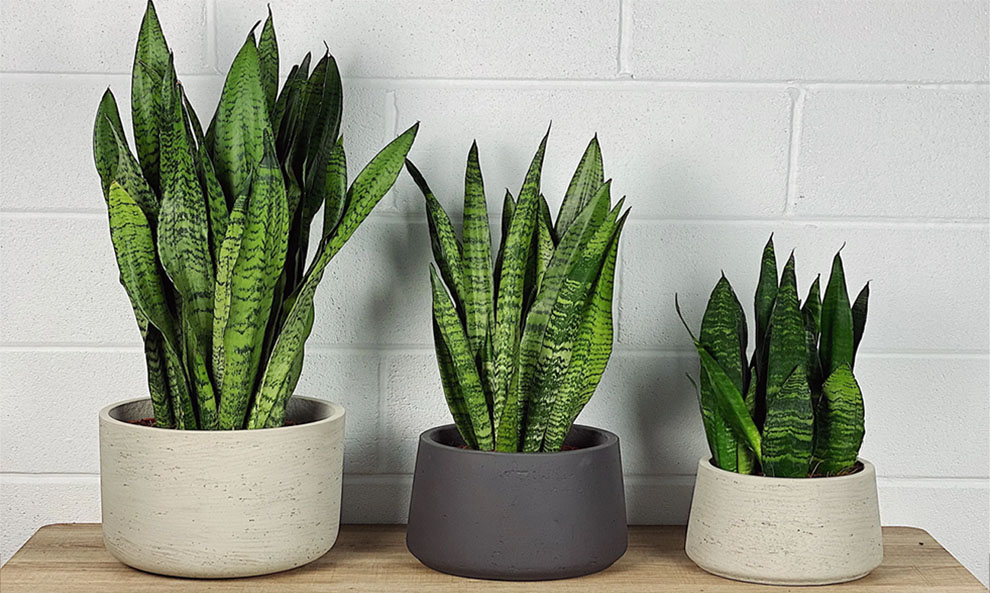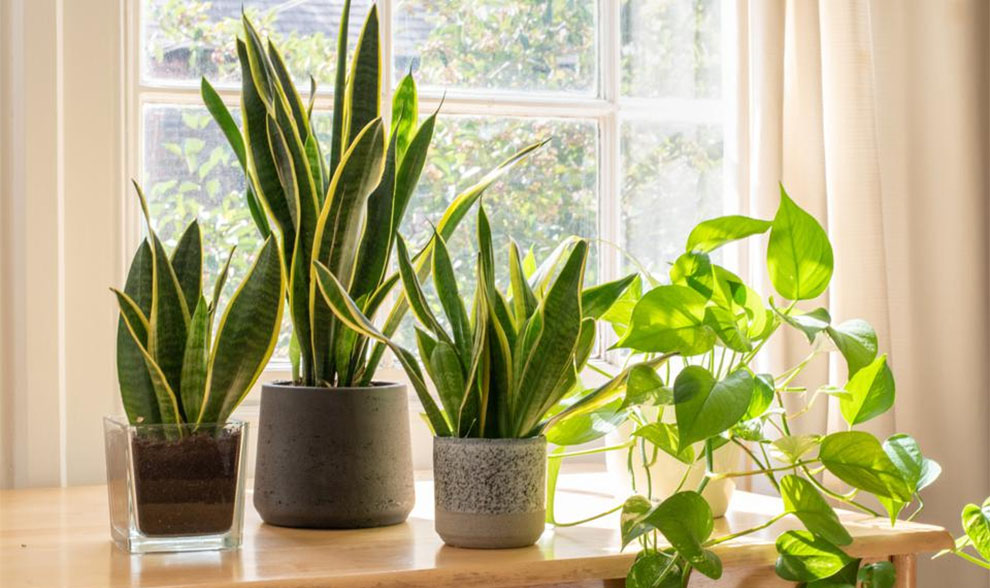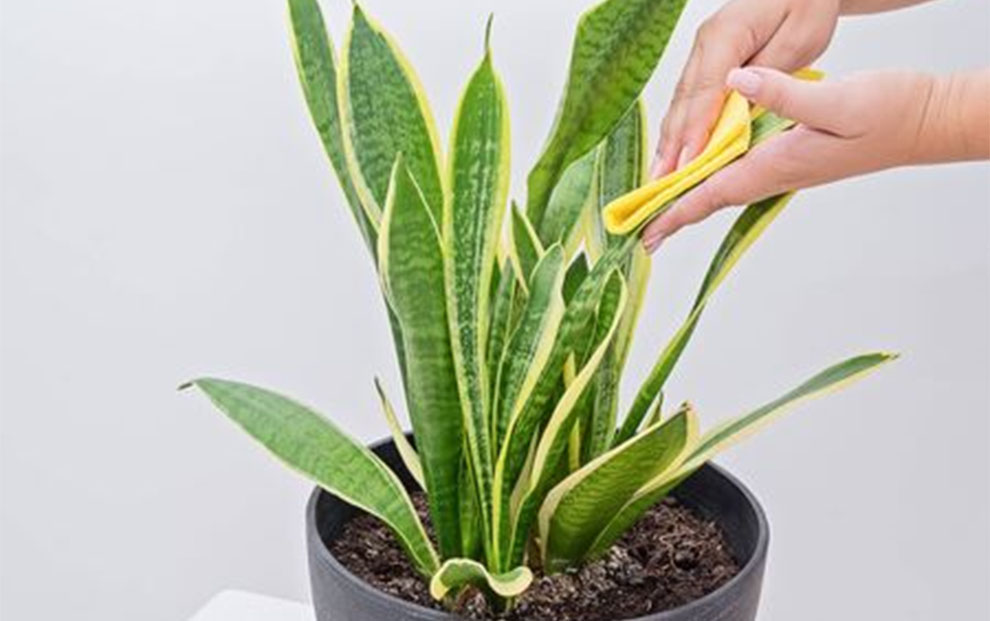How Fast Does Sansevieria Grow? (Snake Plant Growth Guide)

Snake plants, also known as Saint George’s sword, Sansevieria or Mother-in-law’s Tongue, are among the easiest houseplants to take care of. This beginner-friendly succulent plant can be used to give your living room a touch of modernity or as an interesting tabletop display.
For those of you who have been planning to add this species to their plant collection, it will be helpful to learn more about it. Also, if you have been wondering how fast snake plants grow or what snake plants’ annual growth rate is, we can help you out.
In This Article:
- What Are Snake Plants?
- How Fast Does Sansevieria Grow (Snake Plant)?
- How Large Can Snake Plants Get?
- Factors That Affect Snake Plant’s Growth
- How To Enhance Snake Plants Growth Rate?
- Care Tips
- FAQs
- Final Word
Snake Plant Overview
Here is everything you need to know about caring for snake plants!
| Name | Snake plant (Dracaena trifasciata) |
| Family | Asparagaceae |
| Native to | West Africa (tropical) |
| Type | Perennial, evergreen |
| Size | 6 inches to 12 feet |
| Soil type and pH | Sandy and well-drained
Mildly acidic to mildly alkaline |
| Sun Exposure | Partial sun/shade |
| Flowering time | Spring (although blooms are rare in snake plants) |
| Toxicity | Mildly toxic to pets |
How Fast Do Snake Plants Grow?

Snake plants cannot be called fast growers when compared to other plants. Several factors may determine how quickly do snake plants grow, like plant variety, sunlight, water, temperature, humidity, and more.
The growth rate is rapid during the growing season (spring to summer). Therefore, you can expect to see 2 to 3 new leaves (on average) during this period.
However, no new growth is seen during the dormancy period (fall and winter).
How Large Does A Snake Plant Grow?

The size of a snake plant often depends on factors like species and growing conditions. This can be anywhere between 6 inches to 12 feet.
As an indoor plant, a snake plant can reach up to the height of around 8 feet. It can grow up to be 12 feet when planted outdoors. Depending upon the height, its width can be anywhere between 6 inches to 3 feet.
With favorable growing conditions, and considerable nurture and care, these incredible plants can show healthy growth along with gaining good foliage.
Factors Affecting Snake Plants Growth Rate

Other than snake plant’s variety, there are several other factors that decide how fast does sansevieria grow.
1. Temperature
Snake plants respond well to hot and dry environments. These grow well in a normal room temperature range of 60° F or more. You can grow a snake plant in your backyard or garden as long as the temperature does not go below 50° F.
Choose a warmer room or perhaps a window ledge when keeping it indoors. Your plant may grow slowly or stop growing if you keep it in a typically colder room. Check out these indoor water plants too.
2. Soil
How fast does mother in law’s tongue grows also depends on the kind of soil you use. Snake plants grow best in a well-draining potting mix. Grow your plant in a soil mix that rehydrates easily with a single watering session as well as drains quickly. The plant will not become overwatered due to the loose soil’s extra air pockets.
3. Water
Watering plays a crucial rate in determining the growth rate of snake plants. Watering a snake plant the right way is perhaps one of the most important ways to ensure its healthy and rapid growth.
Conversely, the plant slows down its growth to conserve resources if it is watered with only a light watering.
However, when considering how fast do snake plants grow, overwatering is a bigger issue. These plants prefer drying out between water sessions and can survive weeks and days without water!
Generally, it is more than enough to water your snake plant 2 to 3 times per month. Overwatering may lead to root rot. Hence, it is important to ensure that the soil has dried out a bit after the last watering session before you water it again.
4. Light
Lighting is not a big issue when it comes to snake plants. However, it can affect how quickly do snake plants grow up to some level. This plant can tolerate almost any light level.
However, it is recommended to avoid long periods of strong direct sunlight, which may cause the leaves to burn. Excessive shade can also hinder snake plants growth rate.
5. Fertilizers
Thankfully, snake plants don’t really need a lot of fertilizers unless they are suffering from a disease or a lack of nutrients. Succulent fertilizers with a 10-10-10 NPK ratio are a great option when it comes to selecting fertilizers for your snake plant.
Fertilize your plant with a half-strength feed of cactus fertilizer once a month during the growing season to boost its growth. Also, never fertilize your snake plant in winter.
Do check out our fertilizer selection for citrus trees and compost tea brewer kits.
6. Pests
Snake plants are much more pest-resistant against pests than your usual typical indoor plants. However, a spide, mites and mealybugs infestation is possible when they are planted outdoors or kept in poor conditions. Use pesticides to resolve the issue as soon as you notice it or it may end up harming the plant beyond repair.
7. Leaf tip damage
This may also play a role in determining how fast does mother in law’s tongue grow. If the snake plant is top-heavy and tall and more likely to fall over, it may suffer from leaf tip damage. Damage to pointed leaf tips can affect the growth of the leaf blade.
8. Pot size
Another factor that may affect how fast does sansevieria grows is its pot size. Snake plants tend to grow well even if the roots are pot-bound. However, make sure your pot is of the right size. A small pot can hinder the plant’s growth.
How To Increase Snake Plants Growth Rate?

Now that you know about the factors that can impact how quickly do snake plants grow, let’s take a look at how you can promote faster growth in snake plants. Here are a few things you can do to encourage the snake plant’s growth.
1. Bright indirect light
You can boost your snake plant’s growth by keeping it in a bright and warm spot. These tend to grow better in locations that get bright indirect sunlight. A few hours of direct morning sun may also help.
2. Optimal watering
Once you have watered your snake plant, wait for the topsoil to go dry before the next session. It is also recommended to avoid overhead watering to keep the leaves dry.
3. Keep the plant slightly root-bound
To encourage snake plants growth rate and more and formation of more pups, keep your snake plant slightly root-bound. Re-pot the plant once you see several offsets in the planter without any space to grow. Re-potting will also be required if you see the roots are popping out from the soil.
4. Fertilize for optimum growth
Although not heavy feeders, snake plants may benefit from some added nutrition in the form of fertilizers. Use an all-purpose liquid fertilizer such as 10-10-10 in ½ or ¼ of the recommended strength to nourish your plants. You can do this every 4 to 6 weeks to increase the growth. Know more about hydrangea fertilizers here.
5. Keep away pests and diseases
Pests and diseases can obstruct or halt the growth of your plant. Be on the lookout for pest infestations and diseases. Do treat them promptly if you spot any. This will surely help you enhance snake plants growth rate in a healthy manner.
Related: Snake Plant Benefits|Reasons Why Your Snake Plant Isn’t Growing |Disadvantages of A Snake Plant
Snake Plant Care Tips

Now that you know how fast do snake plants grow, here are a few tips to help you care for your snake plant.
- Place your snake plant in a spot where it will receive indirect bright light.
- Avoid moving the plant from low light spots to areas with direct sunlight too quickly. This may shock the plant. Expose it to brighter and brighter light gradually and also adjust the watering habits accordingly.
- If you are keeping your snake plant outdoors, make sure the temperature does not drop below 50-degree Fahrenheit.
- Do not overwater your snake plant.
- Plant your snake plant in a pot with a drainage hole and use a well-draining potting mix. Soggy soil is not good for your plant’s health.
- While repotting, make sure not to bury the plant too deep.
- Do not add fertilizers during winter.
- Water the plant less often in winters since it is not growing actively during this season.
- Wipe the dust that collects over the leaves whenever required.
You might also want to read about how fast these plants and trees grow: Banana, Fiddle Fig Leaf, Pine Trees, Palm Trees.
Common Queries
Q. What is another name for a snake plant?
A. Snake plant (Dracaena trifasciata) is often referred to as mother-in-law’s tongue, viper’s bowstring hemp and St. George’s sword, among other names.
Q. Is snake plant succulent?
A. Yes, snake plant is a succulent. This evergreen, perennial plant belongs to the Asparagaceae family.
Q. How do I keep my snake plant straight?
A. Many people also wonder why the snake plant leaves are bending towards a particular side. This condition can be caused by the direction of sunlight, overwatering, or incorrect repotting practices. The most common reason is not receiving enough sunlight uniformly. So, try to place the plant in any area where it receives light correctly.
To keep the leaves growing straight, make sure you practice optimal watering. Keep the soil moist but make sure it is not wet. Pruning drooping leaves will also help keep the plant straight.
You also need to ensure that you don’t keep your plant in excessive darkness for long periods.
Q. How quickly do snake plants grow tall?
A. Snake plants tend to be slow growers. However, the plant may experience a growth boost if you place it outdoors in summer.
Q. How long can snake plants live?
A. The average lifespan of a snake plant is somewhere between 5 to 10 years. However, they have been known to live up to 20 years or more!
Q. How do I make my snake plant bushy?
A. To make your snake plant bushy, you need to water it sparingly, give it a fair share of bright light, fertilize it wisely, and repot it once it gets rootbound. Avoid cold temperatures, raised humidity and prolonged periods in the shade. Make sure to remove the flowers and keep the plant away from cold drafts.
Q. Is snake plant toxic to pets?
A. Snake plants are mildly toxic to pets. These contain saponins, which is a natural chemical that protects them from fungi, microbes and insects. Saponins may cause gastrointestinal upset in your pets. If ingested by dogs and cats, snake plants may cause nausea, diarrhea and vomiting.
Conclusion
Snake plants may not require the same amount of care that most plants out there do, but with the right growing conditions, you can ensure rapid growth and health in these incredible house plants.
We hope that now you correctly know how fast do snake plants grow, and if you are new to planting and gardening, this sturdy species is just what you need.
However, if you have pets, you need to be a little careful with the placement of the plant, as it can prove to be mildly toxic if digested.
